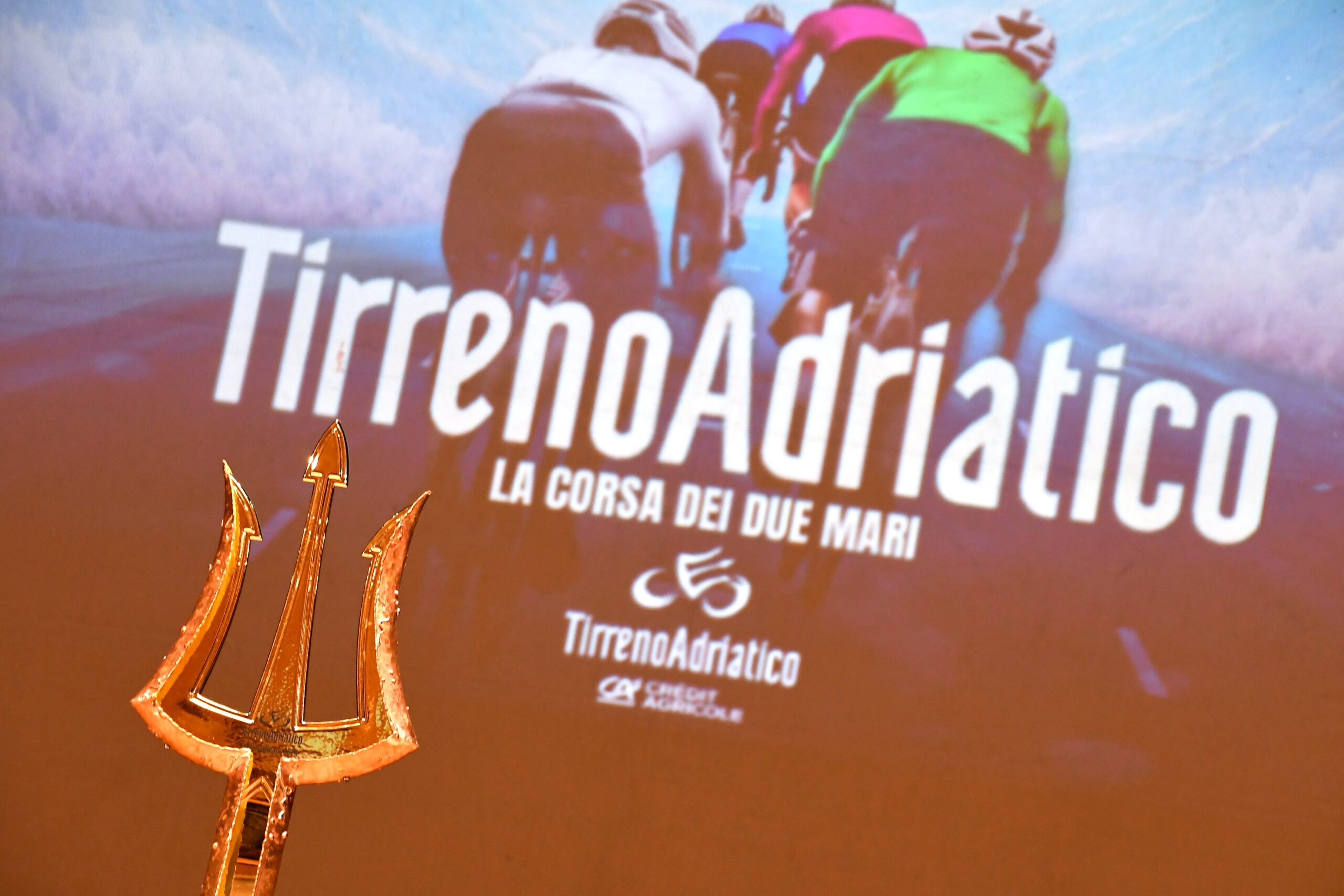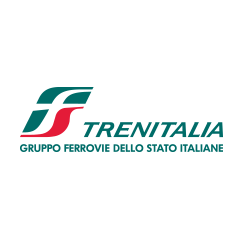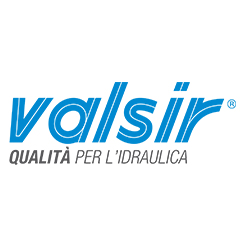An individual time trial, three stages for sprinters, two for finisseurs, and an uphill finish are on the menu of the 59th edition of the Tirreno-Adriatico Crédit Agricole that will take place from 4th to 10th March 2024. In its 1,115-km journey, the Race of the Two Seas will touch four regions of Central Italy starting in Tuscany and passing through Umbria and Abruzzo before finishing, as has become tradition, in Marche.
The route of the 59th Tirreno-Adriatico Crédit Agricole
Click here to discover the 2024 route.
- 04.03.2024 Stage 1 Lido di Camaiore-Viareggio-Lido di Camaiore Tudor ITT, 10 KM
- 05.03.2024 Stage 2 Camaiore-Follonica, 198 KM
- 06.03.2024 Stage 3 Volterra-Gualdo Tadino, 220 KM
- 07.03.2024 Stage 4 Arrone-Giulianova, 207 KM
- 08.03.2024 Stage 5 Torricella Sicura-Valle Castellana, 146 KM
- 09.03.2024 Stage 6 Sassoferrato-Cagli (Monte Petrano), 180 KM
- 10.03.2024 Stage 7 San Benedetto del Tronto-San Benedetto del Tronto, 154 KM
STAGE 1, LIDO DI CAMAIORE-VIAREGGIO-LIDO DI CAMAIORE TUDOR ITT, 10 KM
The route
A perfectly flat individual time trial consisting of two virtually straight sectors, taking a ‘round trip’ along the Camaiore and Viareggio seafronts with only a few connecting bends, and a ‘U-turn’ at km 5.4 in Viareggio where split time is taken. The route then heads straight back to Lido di Camaiore, where an S-bend leads into the final kilometre
Final kilometres
The last 3 kilometres are flat and straight, heading north. With 1,600 metres to the finish line, there are a couple of left-right bends leading onto the seafront where, about 300 metres from the finish line, another pair of right-left bends leads into the home straight.
STAGE 2, CAMAIORE-FOLLONICA, 198KM
The route
This stage is wavy and undulating, especially in the second part. Starting in Camaiore and moving through Montemagno, the route reaches Pisa and the district of Livorno on completely flat roads, then climbs up to Castellina Marittima and continues southwards, passing through Riparbella and Canneto. At the end of the long and mostly downhill segment that follows, the course enters the final circuit of about 20 km to be repeated once.
Final kilometres
The closing circuit is almost entirely in the city, with only a few twists and turns. The last km are mostly straight, on 8 m wide asphalt.
STAGE 3, VOLTERRA-GUALDO TADINO, 220 KM
The route
This stage is very long and fairly wavy at first, running through the hills around Siena, and also crossing Siena. To be noted, there are four consecutive level crossings on the same (secondary) line in the first part. After Torrita di Siena, the gradients ease out and the route continues mostly on straight roads, narrowed at points, along the plain surrounding Lake Trasimeno that leads to Perugia. Then comes the long, manageable climb of Casacastalda, whose descent leads directly to the finish. The road is very bumpy and demanding, especially on the descent.
Final kilometres
The last kilometres are undulating and mostly downhill until the last kilometre, where a rather sharp turn to the left marks the beginning of the finale. The road first presents wide bends and then ends in a straight line. The final straight has a slight uphill gradient of around 4%. The finish line sits on an 8 m wide asphalt straight.
STAGE 4, ARRONE-GIULIANOVA, 207 KM
The route
The stage is divided into two parts: the approach to the final circuit and the circuit itself. The first part takes place on the Sibillini Mountains. After Norcia, the route clears the Valico di Castelluccio, crosses the plain of the same name, and passes the Forca di Presta to reach Arquata del Tronto and the Salaria. The roads here are usually wide and well paved, only narrowed at points, with some tunnels along the route. Street furniture will be the main impediment as the stage passes through urban areas. The closing circuit begins at km 178.
Final kilometres
The final kilometres are part of a 22.7-km circuit to be repeated once. The circuit consists of an undulating first part through Mosciano Sant’Angelo, followed by a slightly downhill sector all the way to the sea. The last 3 km have a mild uphill gradient of about 4.5%.
STAGE 5, TORRICELLA SICURA-VALLE CASTELLANA, 146 KM
The route
A very bumpy stage with a difficult climb in the finale. From Torricella Sicura, past km 0 in Teramo at the end of the opening descent, the route is an endless succession of climbs and descents, linked without pause for breath. The stage passes through some of the most popular locations of the Race of the Two Seas, such as Castellalto and Bellante, and some from the recent past such as Campli and Civitella del Tronto. The route is very demanding in both course and profile, and it runs mainly on slightly worn roads. After Villa Lempa, the peloton climbs to San Giacomo from the eastern side (12 km at an average 6.2%) and then descends into the Castellano valley, taking in 10 km of flat roads beside the lake.
Final kilometres
The last kilometres are flat until about 1,000 metres to go, where the home straight begins, with an average gradient of around 7% and slightly higher peaks.
STAGE 6, SASSOFERRATO-CAGLI (MONTE PETRANO), 180 KM
The route
This is the toughest stage of the Tirreno-Adriatico Crédit Agricole featuring an uphill finish. It winds its way along the valleys of the Marche hinterland, rising and falling non-stop in the first part, and taking in some major climbs such as the Forchetta di Valle Avellana and the ascent of Pian di Trebbio. On the slopes of Monte Petrano, the peloton will negotiate the short, steep climb of Moria (about 2.5 km at 9%) to reach Cagli where the final ascent begins.
Final kilometres
The final kilometres correspond to the climb to Monte Petrano. At 10.1 km in length and an average gradient of 8.1%, the climb rises steeply in the first kilometres (up to 12%), and with constant grades in the second part, with numerous hairpins. When approaching the summit plateau, the gradient decreases.
STAGE 7, SAN BENEDETTO DEL TRONTO-SAN BENEDETTO DEL TRONTO, 154 KM
The route
The first half of the stage is wavy, while the last 80 kms are absolutely. Starting immediately uphill, the route passes through Monteprandone and takes in a tough climb to Montedinove. It then undulates through Montalto delle Marche all the way to Ripatransone. A long descent through Grottammare then leads into the circuit of about 15 km to be repeated five times. The circuit is mainly played out on wide and straight tarmac roads.
Final kilometres
The last 3 km run along wide and mainly straight roads, with a few mild bends on medium-width roads in the first part. There is one last double bend about 1 km from the finish.





























